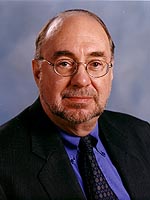2003 Lectureship Recipient

Professor H. Scott Fogler
Vennema Endowed Chair in Chemical Engineering
Arthur Thurnau Professor
University of Michigan
April 23, 2003
|
Abstract |
|
"Fused Chemical Reactions: From The Pharmacokinetics of Acute Toxicology to Wax Removal in Sub-Sea Oil Pipelines" |
|
Fused chemical reactions are reactions that are delayed from taking place for a specified time after initiation. After defining different types of fused reactions we will describe the pharmacokinetics of two toxic systems in humans. In the first, we discuss the pharmacokinetics of cobra bites and the interactions of the cobra venom and antivenom in the body and on receptor sites. Here the chemical fuse length is the time between the bite and the time in which one-third of the receptor sites are blocked and death occurs. The second system describes, the build up and metabolism of alcohol and acetic anhydride in the human body. A systems approach is used to model and predict the alcohol-time and acetaldehyde-time trajectories in normal humans and in ALDH deficient humans. Finally, the potential solution to a one billion dollar problem using fused chemical reactions to remove wax in sub-sea pipelines will be discussed. |
|
Abstract |
|
"Using the Senior Unit Operations Laboratory to Develop Trouble Shooting Skills and to Ease the Transition to the Work Place" |
|
This lecture describes a senior level unit operations laboratory and how it was used not only to fulfill the traditional goals of a laboratory course but also to provide a number of intellectual enhancements not normally found in undergraduate chemical engineering courses. The primary enhancements focused on the development and practice of the students' critical thinking and trouble shooting skills and the preparation of the students for the transition to the workplace. The lecture topics included 1) negotiation skills, 2) technical and non technical presentations skills, 3) critical thinking and trouble shooting skills, and 4) talks from engineers in industry about what is expected of a new engineer. The application of critical thinking and trouble shooting algorithms is practiced in the laboratory primarily in the last three weeks of the course. During this time the students have to find an equipment fault generated by the graduate student instructors who altered the equipment (e.g., turned a valve in the wrong direction) and collected data during the faulty operation. The students are evaluated not only on finding the fault and reproducing the faulty data, but also on trouble shooting procedures they used. |
